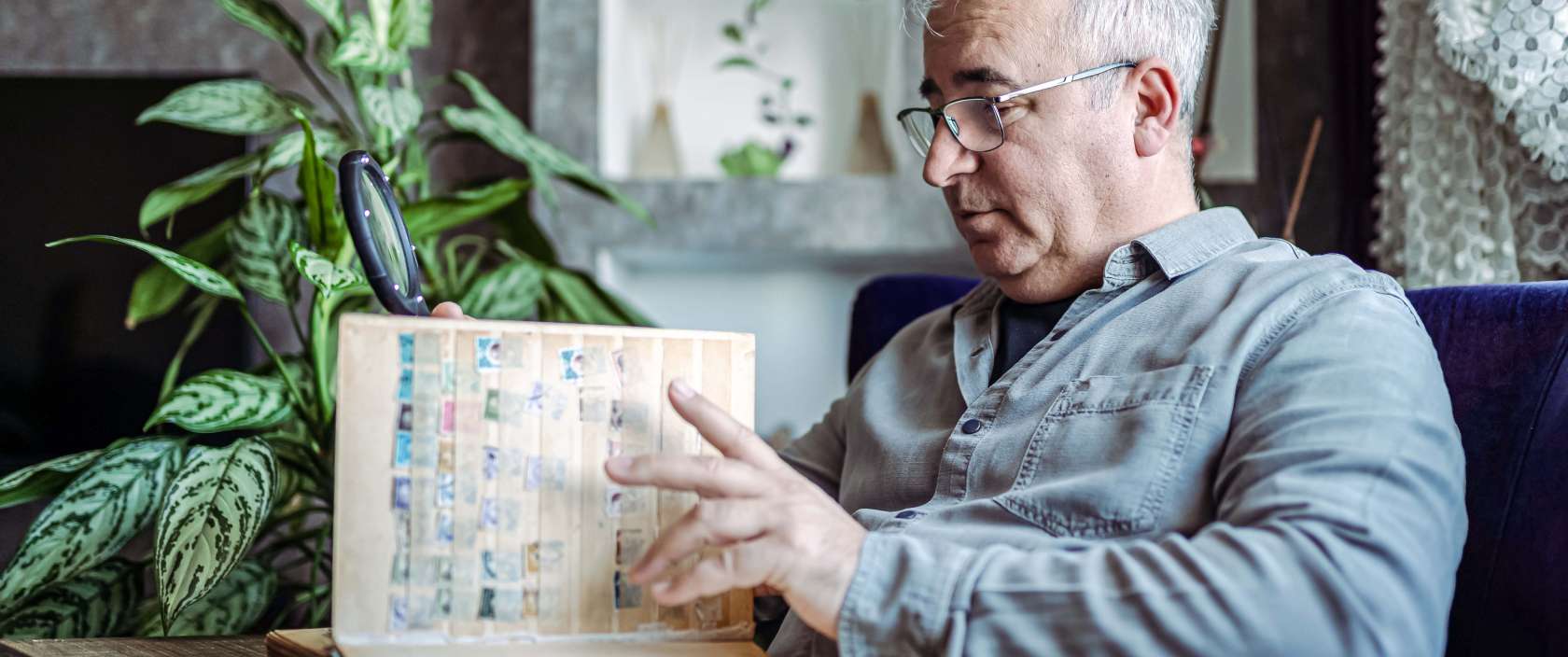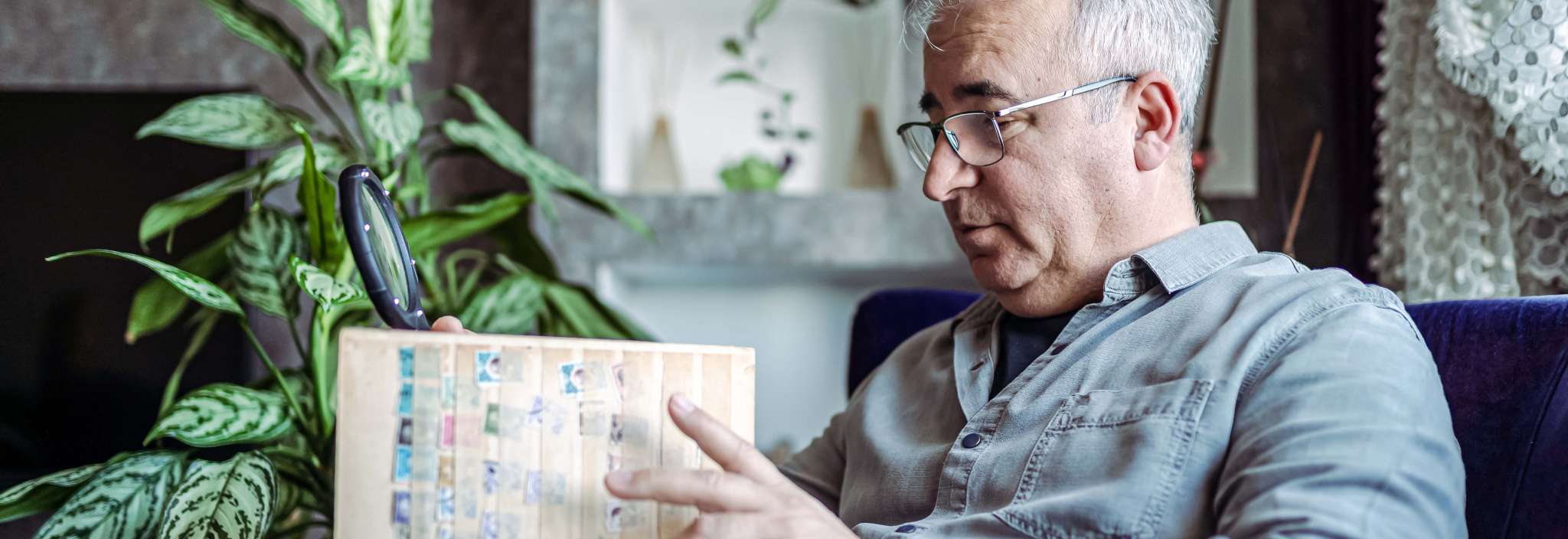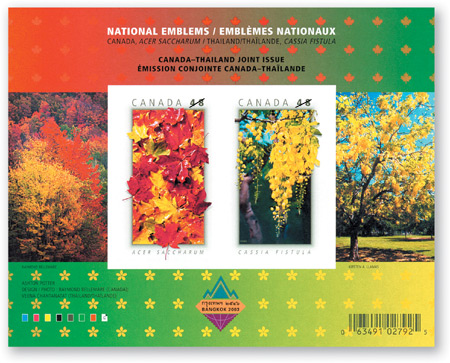National Emblems
October 04, 2003
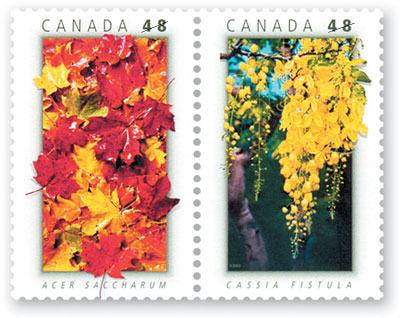
The maple leaf is our most distinctive national symbol. Emblazoned on our flag since 1965, it has long been recognized as an emblem of Canada.
A very different tree holds a similar meaning for the people of Thailand. The large yellow blossom of the cassia fistula is an official national emblem for that country.
The international philatelic exhibition Bangkok 2003 will be held in Thailand in October. In conjuction with Bangkok 2003, Canada Post has teamed up with Thailand Post Co. Ltd. for this special joint issue, featuring national plant emblems of both Canada and Thailand. The stamps will be available in a pane of 16 stamps and a souvenir sheet of two stamps.
ACER SACCHARUM
As early as 1700, some historians say, the maple leaf was used as a Canadian symbol. It was proposed as an emblem of Canada in 1834, when the Société Saint-Jean-Baptiste was founded, and adopted again as a national emblem for the visit of the Prince of Wales in 1860. By the time Alexander Muir wrote The Maple Leaf Forever in 1867, its national symbolism was widely understood. During both the First and Second World Wars, Canadian troops proudly wore the maple leaf on their badges, and it appears carved on the gravestones of fallen soldiers.
The maple leaf appears on coats of arms granted in 1868 to Ontario and Quebec and in 1921 to Canada, but it was not officially recognized as a national emblem until 1996.
THE CASSIA FISTULA
The cassia fistula is a deciduous tree native to tropical Asia. It flowers in some countries shortly before the onset of the monsoons, producing a beautiful display of large yellow blossoms. In Thailand, its leaves and seed pods have long been used for cooking and medicines.
In traditional Thai culture, the cassia fistula is considered one of nine auspicious trees, thought to bring happiness, success and good fortune to those who grow them. Its flowers are prized for their beauty.
The flower of the cassia fistula was made an official national emblem of Thailand in 2001.
ABOUT THE STAMPS' DESIGN
The maple stamp was designed by Raymond Bellemare in different tones of red, as a typical image of autumn leaves. "A few leaves overlap the frame to avoid a rigid-looking design," Bellemare says. His previous stamp designs include rural mail boxes, premiers and several queen and maple leaf stamps. The cassia fistula stamp was designed by Veena Chantanatat of Thailand Post Co. Ltd.
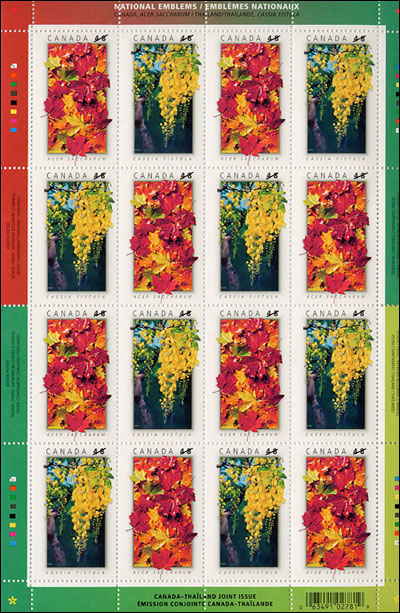
Pane of 16 stamps (2 designs)
$7.68
- Product #: 403551107
- Denomination: 2 x 48¢
- Design: Maple: Raymond Bellemare (Canada) Cassia fistula: Veena Chantanatat (Thailand)
- Dimensions: 30 mm x 48 mm (vertical)
- Printer: Ashton Potter
- Printing Process: Lithography in 7 colours
- Quantity: 3,000,000
- Gum Type: P.V.A.
- Perforations: 13+
- Tagging: General, 4 sides
- Photography: Raymond Bellemare (Canada) Kirsten A. Llamas (Thailand)
- Paper Type: Tullis Russell Coatings
- OFDC Cancellation Location: Notre-Dame-du-Lac QC
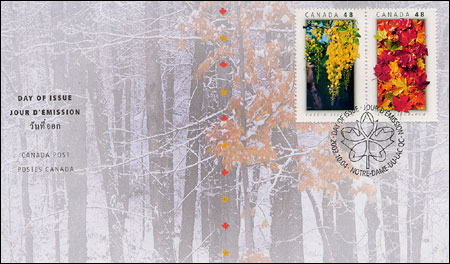
Official First Day Cover (Canadian)
$1.96
- Product #: 403551126
- OFDC Cancellation Location: Notre-Dame-du-Lac QC
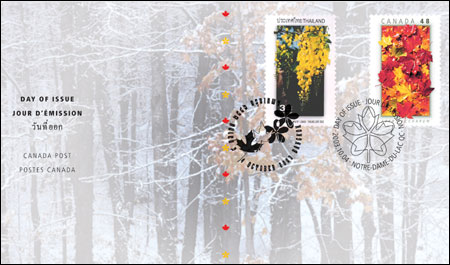
Official First Day Cover (Joint)
$3.60
- Product #: 341629
- OFDC Cancellation Location: Notre-Dame-du-Lac QC
